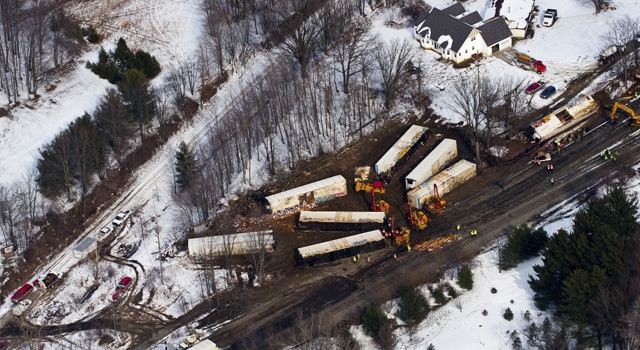In many pollution cases, local residents face water pollution that has not yet reached their residential drinking water wells. These residents have nonetheless been harmed.
Because of the threat of contamination, and the uncertainties that often surround the exact location and spread of groundwater contamination when it is first discovered, local residents often have to take real steps to deal with the pollution.
They may be compelled to buy and rely on bottled water, take shorter baths and showers, cease using pools, and cope with the concerns and discomforts of being under the threat of contamination. Residents in such situations should be able to sue for nuisance, but courts often deny such claims because it is later determined that the contamination did not yet reach their wells.
Nuisance Claims: Validity If Contamination Not on Property
These residents generally assert claims in nuisance, seeking recovery both for the effect this contamination has on their lives (often referred to as a claim for the “loss of use and enjoyment” of their property) and the impact the threat of contamination has on the value of what is frequently their largest investment — their homes (often referred to as a “diminution in property value” claim).
But, when facing these types of allegations, courts are left with the difficult question of whether a person can have a valid nuisance claim even where no contamination has reached the plaintiff’s property. Where does liability stop in such a scenario?
Unfortunately, to avoid that difficult question, courts have too often simply created a bright line — if you don’t have contamination above regulatory standards, you don’t have a claim. This type of holding ignores the entire history and purpose of a nuisance claim.
Private Nuisance Claims
Private nuisance claims have a long history at common law. Originally, beginning in the 12th century, an action for “assize of nuisance” was available where there was no actual entry on land. This action was distinguished from “assize of novel disseisin,” which involved actual physical impact on another’s land. The assize of nuisance protected against interferences with the use and enjoyment of the land.
This distinction remains — nuisance claims at common law, which developed from assize of nuisance, protect rights even where there is no actual trespass or physical encroachment on the land. Trespass claims at common law cover physical intrusions on another’s property. See generally Restatement (Second) of Torts, § 821(D) cmt a. Thus, the purpose and history of a nuisance claim is to provide a remedy even where there is no physical intrusion onto the plaintiff’s land.
Yet, courts repeatedly have held that no claim for nuisance can stand in environmental tort actions where the contamination at issue has not yet reached the plaintiff’s land. In fairness, some of these cases have recognized that a nuisance claim does not require physical intrusion on another’s property. See, e.g., Adkins v. Thomas Solvent Co., 487 N.W.2d 715 (Mich. 1992); Exxon Mobil v. Albright, 71 A.3d 30, 94-95 (Md. App. 2013).
They go on to find that impacts on use and enjoyment resulting from the threat of contamination or low levels of contamination are not “significant” enough to warrant a claim in nuisance. For example, in Albright, the court found a nuisance claim could not lie based on evidence of having to use “bottled water or Brita filters, entertaining in and about their homes less than expected, reducing the frequency of use of outdoor spaces, and taking shorter showers and baths.” Id. at 95. But this sort of limitation seems to ignore the reality of living with contaminated groundwater, especially where that contamination threatens a home’s drinking water.
Nuisance Actions Based on Uncertainties
Nuisance actions traditionally have been viable causes of actions for foul odors, loud noises or bright lights that intruded upon the plaintiffs’ property. Indeed, these are the very types of non-trespassory nuisance claims upheld by Courts. See Restatement (Second) of Torts, § 821D, reporters’ notes.
If such interferences are sufficiently “significant” to be worthy of legal protection, how can it be that losing access to one’s drinking water — even for a relatively short period of time while contamination is investigated – is not? It cannot be ignored that the uncertainties often surrounding groundwater contamination – How far has it spread? Where is it moving? How deep is it? Where are the highest concentration levels? — are all the result of the polluter’s actions in causing and failing to control or investigate the contamination.
Courts too often seem to simply disregard the impact of losing one’s tap water for drinking and cooking, or losing access to a home’s swimming pool, as “insignificant.” But the result of such an approach is, effectively, giving a license to pollute without threat of liability. This cannot be the law, but for reasons that remain unclear, too many courts have decided cases along those lines.
For practitioners, it seems that steps must be taken to bring the reality and gravity of the harms caused by threatened or unknown levels of contamination to the court’s attention. Compelling and convincing testimony from individual plaintiffs is critical to get across to the court the difficulties of living with the contamination that is entirely the result of the defendant’s actions.
Indeed, many of the cases relied upon by defendants in these situations faltered on a lack of evidence of actual interference with use and enjoyment in the case, or even an outright concession by plaintiffs that they were not seeking use and enjoyment damages. See, e.g., Adkins, 487 N.W.2d at 726; In re Wildewood Litig., 52 F.3d 499 (4th Cir. 1995); Golen v. Union Corp., 718 A.2d 298 (Pa. Super. 1998).
Where defendants attempt to rely on such cases, they can be and must be distinguished where plaintiffs can assert actual and substantial impacts on their lives. Losing access to one’s drinking water is no minor inconvenience, especially where the possibility remains that the drinking water the plaintiff has been relying on for years may have unknowingly been contaminated. These are the types of impacts to the pleasure, comfort and security of one’s home that a nuisance claim is intended to protect.
 Todd Ommen
Todd Ommen 

